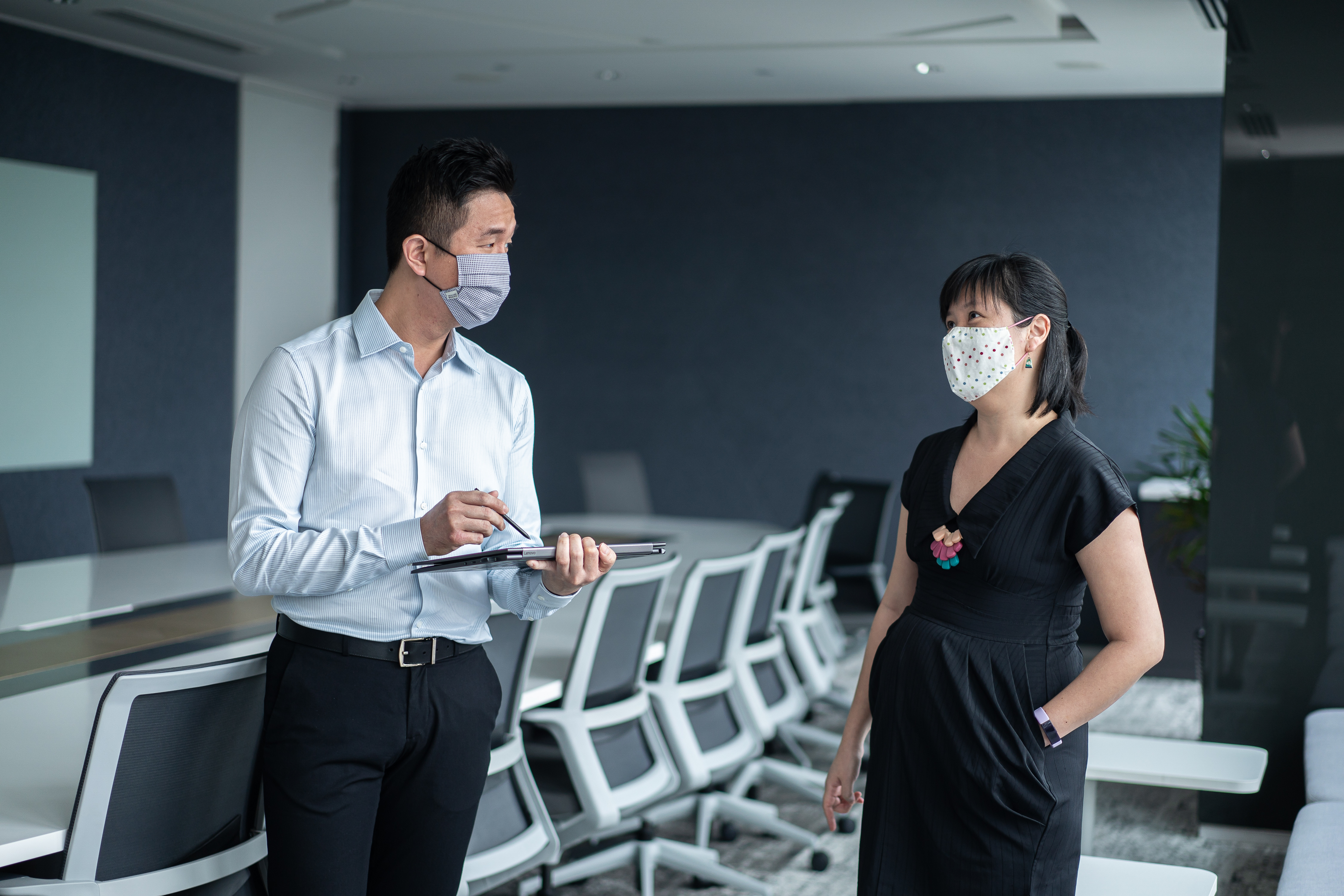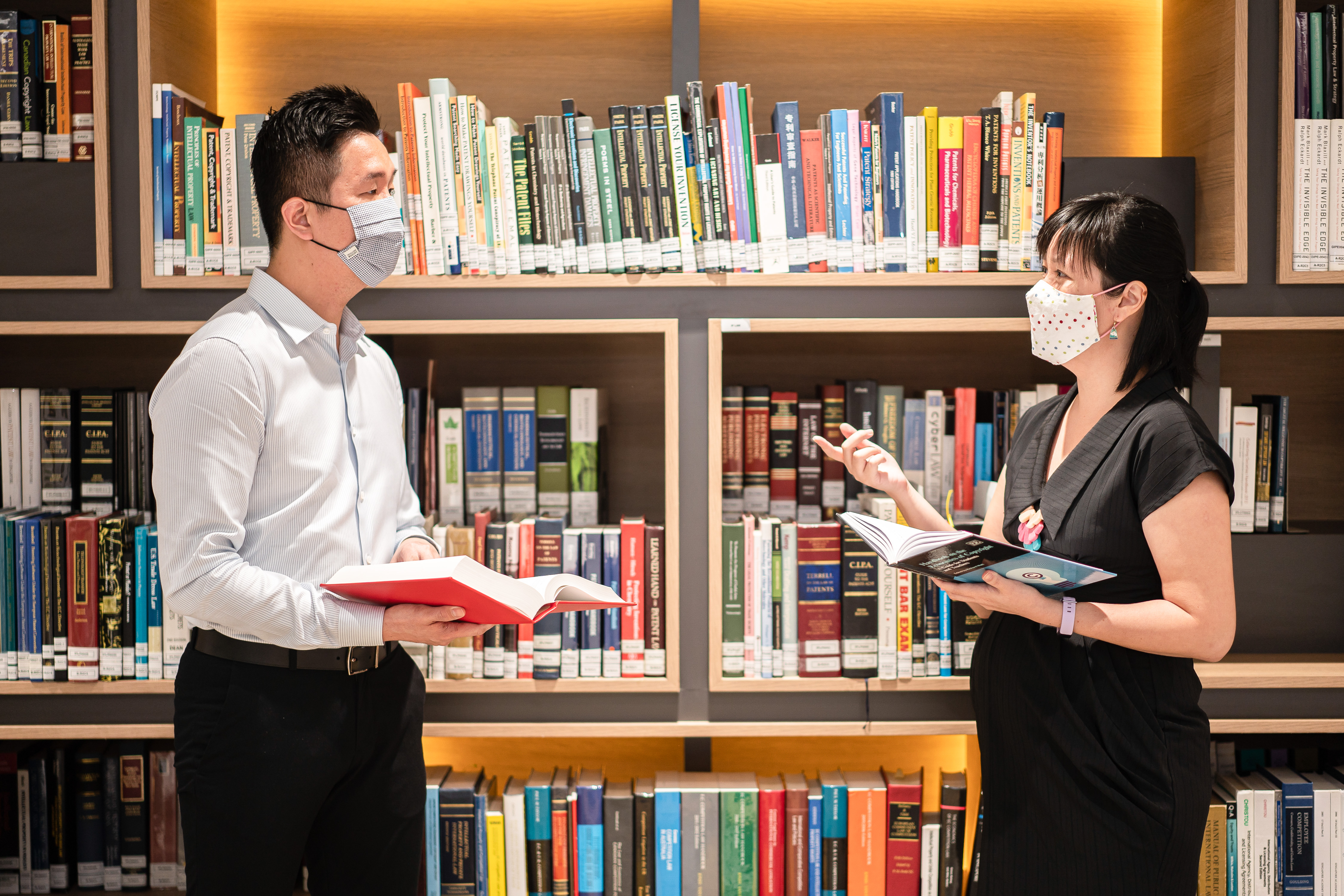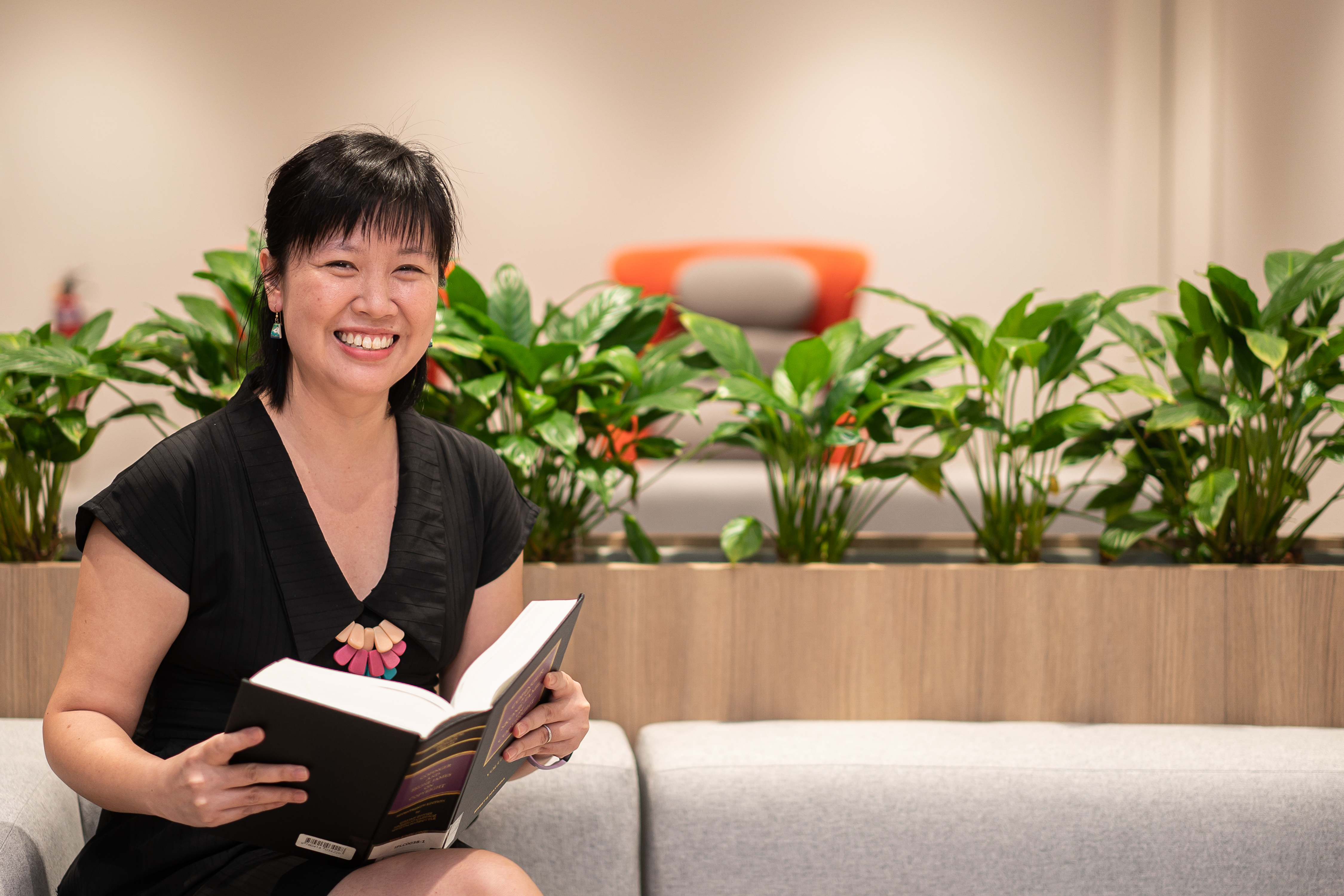Protecting Your Right to Copyright
Protecting Your Right to Copyright
Insight MinLaw goes behind the scenes to uncover stories about how the work we do impacts you.
The Copyright Bill, which is expected to come into effect in November 2021, will introduce a slew of changes and keep Singapore’s copyright law abreast of technological advances. It aims to benefit people from all walks of life from consumers and creators to performers and businesses. The new Bill is also written in plain English to enhance its clarity and understanding.
We take a deep dive into the new law with Soh Lili from MinLaw’s Intellectual Property Policy Division and Gavin Foo from the Intellectual Property Office of Singapore (IPOS).
 From left: Lili and Gavin
From left: Lili and Gavin
Keeping Up with Content
Technology has changed the way we consume and create all types of media. We have moved from tapes and CD-ROMs, to livestreams and memes. Technology has made information and creative works far more accessible, and also changed the way content is consumed and shared.
Such rapid advancements mean that the laws governing how content can be used and protected need to not only be up-to-date, but also stay ahead of the curve. With this in mind, MinLaw and IPOS decided to embark on an overhaul of the Copyright Act. “It’s been a long time coming, really. This is the most comprehensive review of our existing Copyright Act since it was first enacted in 1987,” said Gavin. The aim of the review is to ensure that Singapore’s copyright laws are well-suited to meet the demands of the digital age whilst continuing to support innovation.
Asked how the proposed changes will help, Lili shared, “We’ve taken great effort to conduct numerous public consultations with various groups of stakeholders through different channels, sought to understand their difficulties and challenges, and have tried as far as we could to incorporate all of this feedback when writing the Bill.”

Re-Shaping Copyright Protection
Apart from being more reader-friendly, the new Bill also introduces several noteworthy changes, such as granting creators and performers the right to be identified when their work or performance is used, and creating new exceptions such that copyright works can be used for certain purposes like computational data analysis, as long as they are lawfully accessed.
“Generally we have focused our efforts in two areas. One, helping individual creators better protect their creation. Two, putting in exceptions, or permitted uses, to allow copyrighted works to be used under certain circumstances, for the public good,” explained Lili.
On the principles behind the new provisions, Lili noted on the need to go back to the basics of copyright. She said: “For every issue, we always go back to that: what should we do so that the incentives are still there for people to create.”
 Gavin, Senior Legal Counsel at IPOS
Gavin, Senior Legal Counsel at IPOS
For example, with the issue of set-top boxes, while consumers may be unhappy that the new legislation could restrict their access to free – but nonetheless, pirated – content, Gavin and Lili hope that with time, mindsets will change and there will be greater respect for IP rights. Nevertheless, consumer concerns and pain points are always recognised and taken into account during policy making. So in this case, the policy goes beyond the legislation and includes encouraging rights holders to provide quality offerings at affordable price points.
The duo also feel that the ability of the law to shape behaviour should not be underestimated. With provisions like the new right of attribution, content creators have the legal rights to go after those who use their work publicly without attribution. While they may not want to enforce this in every single instance, they could choose to do so against recalcitrant or repeat offenders. Lili said: “Hopefully, over time, we will see far fewer instances of the failure to attribute, greater respect for our creators and a movement away from potentially having to sue every single person who fails to attribute.”
The Biggest Copyright Reform
A large-scale review for an age-old topic like copyright was never going to be easy. The team studied other jurisdictions such as the United Kingdom, the United States and Australia.
“In the beginning, we looked at copyright reviews that other jurisdictions were conducting or had conducted – the components they were reviewing and how applicable these were to us. We also canvassed opinions from academics, other government agencies, and looked at the inquiries and complaints on copyright that have come in over the years. This formed the initial slate of proposals for the public consultations,” explained Lili.
Gavin recalled the countless iterations they had to scrutinise for more than 500 sections of the Bill. “For existing provisions, we had to make sure we did not inadvertently change their meanings while simplifying them. For other provisions implementing new proposals, we had to ensure that our policy intent was accurately and clearly translated in the law.”

Creating a Law for the People
Public consultations were held to better understand the needs and challenges of a diverse range of stakeholders, and how to address them through the amendments.
Lili shared the challenges faced by the team at this stage: “The various groups of stakeholders have different needs, challenges and concerns. Photographers have a set of needs and challenges, music band members have another, and school teachers and students have an entirely different set altogether. The list goes on.” In total, the team gathered more than 500 responses from individuals and organisations, through more than 20 group engagement sessions in the form of townhalls, roundtables, symposiums and focus groups.
While reactions to some of the new provisions have been mixed from a diverse group of stakeholders, Gavin believes in a give-and-take approach. “Making compromises is inherent in policymaking and what we strive to do is to take into account all perspectives. Where it’s not possible to accommodate specific concerns in the legislation, we think about other ways to ameliorate those concerns,” he said.
Lili added: “There’s a lot about copyright that is unknown or difficult to understand for people, so the fact that we have managed to educate so many people on copyright through this review, I think that is already one great outcome on its own.”
 Lili, Deputy Director of the Intellectual Property Policy Division at MinLaw
Lili, Deputy Director of the Intellectual Property Policy Division at MinLaw
A Whole-of-Government Effort
The new copyright law is not just the work of MinLaw and IPOS, but also the culmination of the efforts of multiple governmental and private organisations.
Lili said: “Copyright cuts across many industries and comprises local and international stakeholders. Agencies such as the National Arts Council (NAC) worked with us on issues relating to our creative industries; the National Heritage Board (NHB) and National Library Board (NLB) on issues relating to our cultural and heritage organisations; the Ministry of Education (MOE) on education issues; Customs, the Attorney-General’s Chambers (AGC), the Singapore Police Force (SPF) Intellectual Property Rights Branch (IPRB) on enforcement issues – and these are just the Singapore Government agencies alone.”
Gavin and Lili described the relationship between organisations as “highly synergistic”, with the most suitable agencies stepping up to take on leading roles as appropriate.
“Even when the provisions come into force, a lot of coordination and collaboration will also be needed amongst the different organisations, as we continuously improve and enhance our procedures and practices. The ultimate objective is to build a strong copyright regime in Singapore, with rights holders and users co-existing harmoniously, as users recognise and accord rights holders with the respect and acknowledgement they deserve for their creations and works,” Gavin noted.

This also fits into the Singapore Intellectual Property Strategy (SIPS) 2030, which aims to not only maintain Singapore’s top ranking in its intangible assets (IA) and intellectual property (IP) regime, but to also grow Singapore as a global hub for IA/IP activities and transactions.
In this respect, Singapore has achieved several IP accolades. Its business-friendly IP regime has consistently been ranked as one of the best in the world. In the World Economic Forum’s Global Competitiveness Report 2019, Singapore came out tops in Asia and second in the world for having the best IP protection. Singapore was also ranked top amongst 50 of the world’s leading IP offices by the World Trademark Review IP Office Innovation Ranking 2020, and most recently in the 2021 Bloomberg Innovation Index, it was ranked second globally.
The recent copyright review has further strengthened Singapore’s high level of protection for rights holders through new rights and enforcement mechanisms, and at the same time, has ensured that there will be reasonable access to works while spurring innovation.
Concluding, Gavin said: “It is only when foreign investors and innovators have enough confidence in Singapore’s IA/IP regime that they would choose to bring their works and products here. This would definitely go a long way in driving Singapore’s business and economic relations.”
Last updated on 25 August 2021
Other stories you may like:
The Precious Battle Against Money Laundering and Terrorism Financing
The Race to Give Singaporeans and Local Businesses a Lifeline

